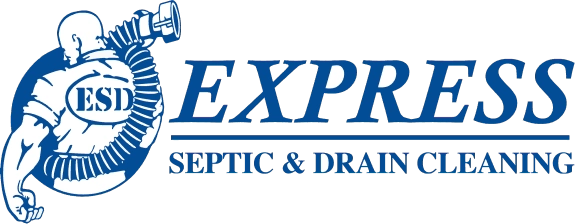Most homeowners receive water directly from a central water supply that the local water department manages. The quality of this water is protected by strict guidelines that are maintained by the Environmental Protection Agency (EPA). However, these guidelines don’t apply to privately owned wells and other individual water systems. If you obtain your water from a well, you’ll need to have the water tested to determine if it’s safe to drink.
When to Test Well Water
Based on recommendations by the National Ground Water Association (NGWA), you should test your well water at least once every year to determine the concentration of nitrates, bacteria, and similar contaminants. There are also certain situations that call for you to perform testing more frequently. For instance, if you notice a change in the appearance, taste, or smell of the water, you should have it tested. The same is true if your area has recently obtained a large amount of floodwaters or you notice a broken well cap.
If your existing well has a lengthy history of being contaminated by bacteria, having the well tested once every six months or so may be preferable. In the event that your septic system has malfunctioned recently, the water should be tested. Your local health department can give you recommendations on the types of tests you need to perform based on where you live.
Common Contaminants
When you’re testing for contaminants, there are many different types that you should be on the lookout for. Bacteria, viruses, and other kinds of bacteria are found along many surfaces and can get into animal waste and human sewage. If people drink water that contains high levels of microorganisms, they’re more likely to go through gastrointestinal problems. It’s also possible for private wells to be contaminated by snow-melt and rainfall. Water runoff from these sources can cause microorganisms to seep into your well water.
Nitrate is another contaminant that’s prevalent in well water because of its presence in human sewage, chemical fertilizers, and animal waste. This substance is capable of contaminating private wells via surface water seepage and groundwater movement. Once someone consumes water that’s high in nitrates, these substances will be converted directly into nitrites.
It’s possible for heavy metals to get into your well water through mining operations, municipal waste disposal, petroleum refineries, and cement plants. The types of heavy metals that are found in well water include:
- Lead
- Arsenic
- Chromium
- Cadmium
- Copper
- Selenium
Some additional contaminants that are commonly found in well water include organic chemicals, radionuclides, and fluoride. The organic chemicals that make their way into well water are derived from household products, the primary of which include inks, pesticides, paints, petroleum products, disinfectants, sealants, solvents, and pharmaceuticals. These chemicals can get into your private well through spills, surface water runoff, and waste disposal.
How to Test Your Water
The indicator that’s most commonly used to identify how much bacteria is present in well water involves measuring for total coliform. The amount of coliform that’s found in the water indicates how contaminated it’s become. Total coliform refers to an expansive category of bacteria that isn’t often harmful to humans. Even though this type of bacteria isn’t too dangerous, it may be a sign that your water quality is getting worse. Depending on how many contaminants are identified with the initial tests, additional testing may be performed to search for fecal contamination.
If your well water consists of high levels of nitrate, this substance may come from septic systems, fertilizers, or the natural breakdown of nitrogen compounds in rocks and soil. When your water contains high nitrate levels, there’s a good chance that other contaminants are present in the water as well.
Among the most common tests that’s used to determine the quality of well water involves testing for pH levels. The pH of water refers to the acidity or alkalinity of water and is measured at a scale of 0-14. When water is more alkaline and has a pH over 7, it typically contains high levels of calcium and magnesium. Even though well water with a high pH doesn’t always taste great, it’s less harmful than acidic water.
If the water’s pH is well below the neutral range of 6.5-7.5, it’s likely that the water consists of high concentrations of contaminants. Septic pumping companies are capable of testing well water and will commonly perform tests with a pH sensor.
Additional Tests to Consider
Depending on where you live, additional types of tests may be recommended. In certain areas, radon and arsenic are two potential water quality issues that can be hazardous to a person’s health. Arsenic gets into water when it comes into contact with certain types of soils and rocks.
As for radon, it’s a colorless and odorless gas that’s produced from uranium being broken down. It’s possible to be exposed to radon via your well water or cracks that occur in your foundation. Your local health department can tell you if there are any unique water quality concerns in the area where you live.
Understanding the Results
If you request to have your well water tested by a septic pumping company, it’s important to understand what the results tell you. Water test results don’t always indicate if there’s a health risk to be concerned about. When a professional septic pumping company provides testing results, they should take some time to explain what they mean.
Health risks vary depending on which substances are found in the water, the concentration of these substances, and the possibility that people will drink the well water. Even though the EPA doesn’t set guidelines for private water systems, you can compare the quality of your water against the guidelines that regulate public water systems.
Detecting High Levels of Contaminants
In the event that a health risk is still present even after your well is maintained, you may need to inquire about possible treatment solutions and technologies. The type of treatment you use mainly depends on which contaminants have been found in your water.
Consider a Cleaning
Once water quality tests are performed in your well, you can find out if your well system needs to be cleaned. In this scenario, it’s common for a coliform test or an anaerobic bacteria test to be performed. A well cleaning can get rid of contaminant buildup along the walls and bottom of the well. The well casing can also be brushed and cleaned to remove solid contaminant buildup.
An additional area of the well that will be thoroughly brushed and cleaned is the water intake. If you have an open borehole well, it can be properly cleaned by focusing high-pressure water against the borehole walls, which will cause the debris to loosen. If you have a water treatment system in your well system, it should be checked on a regular basis to make sure it’s still effective.
When you want to get your well water tested, it’s best to request these services from our septic pumping company. Here at Express Septic & Drain Cleaning, we understand how to test well water and determine how contaminated it is. Depending on the results of the test, we’ll help you to select a treatment that will improve your well water quality.
If you believe that your well water isn’t up to the quality that you expect it to be, we’ll also focus on identifying the source of the contamination. Some of the additional services that our team offers to Nampa, ID residents include septic installation, repair, and maintenance services. Call us today to schedule your next well water test!



